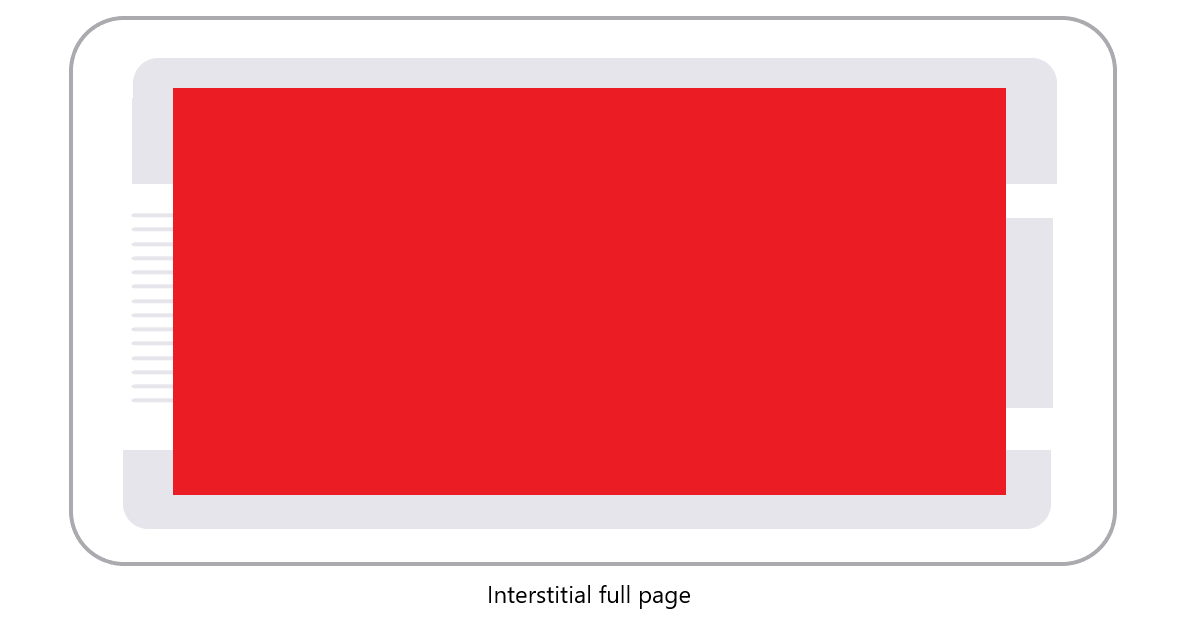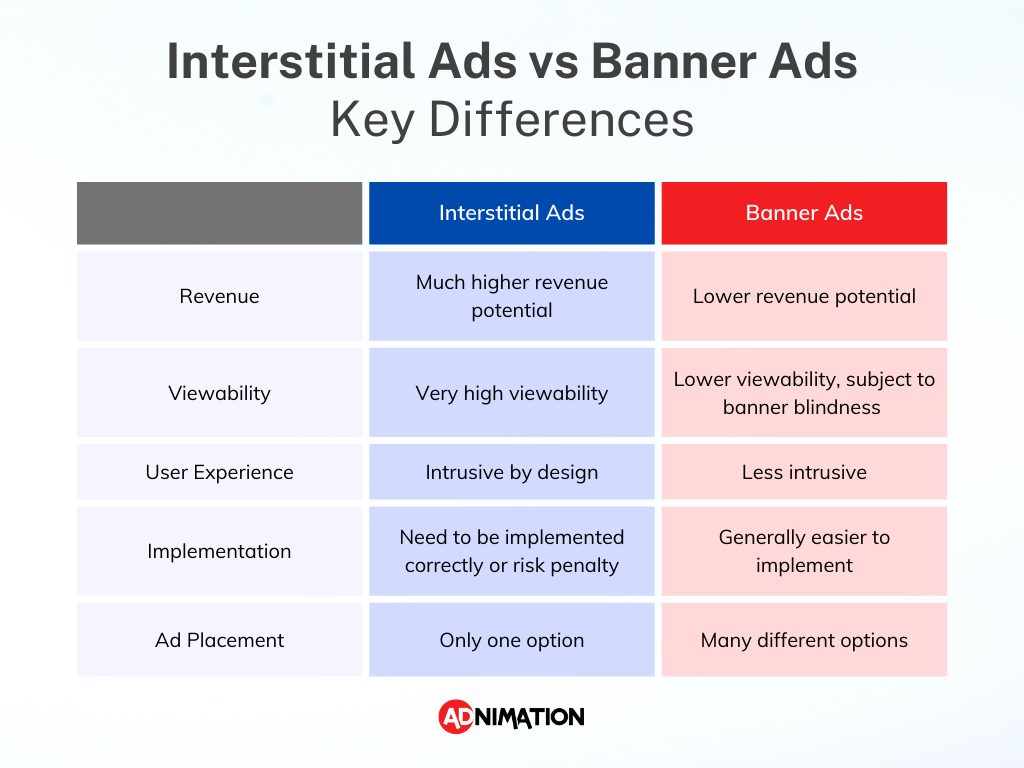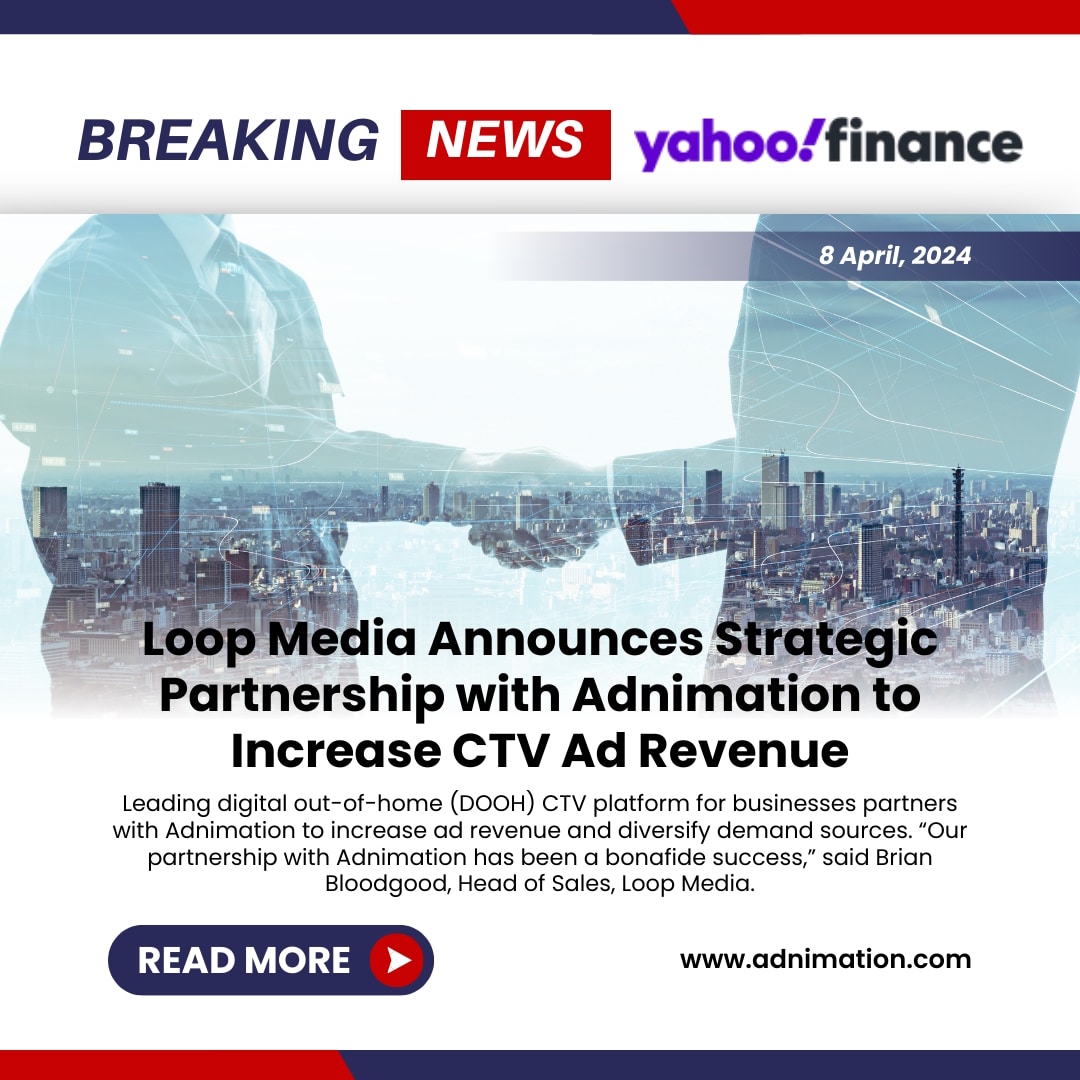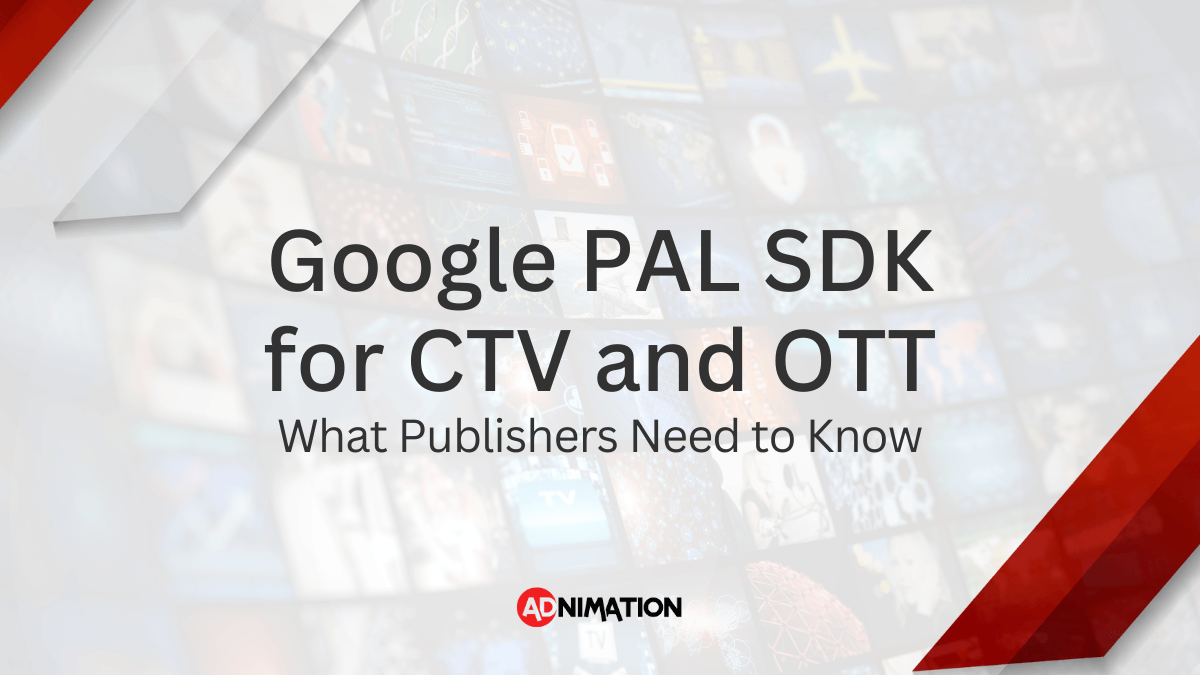Banner blindness, the phenomenon of users ignoring ads on websites and apps, poses a big challenge for publishers.
After all, if users don’t click on the ads on your website or app, advertisers will simply stop buying your ad inventory. And when that happens, your ad revenue will tank.
That’s why publishers are constantly on the lookout for new and innovative ways to maximize their ad revenue.
In this article, we will explore the differences between interstitial ads and banner ads – their pros, cons, and which one will make you more money.
What are Interstitial Ads?
Interstitial ads are full-screen ads that display between the user’s current page and the page they intend to navigate to.
In contrast to banner ads, which are small and can easily be overlooked, interstitial ads are difficult to miss and require users to dismiss them to access their intended page.
This makes them an effective method for attracting users’ attention and enticing them to click on the ad. When users interact with ads, advertisers are willing to pay higher CPMs, resulting in higher RPMs for publishers.
What are Banner Ads?
Banner ads, also known as display ads, are square or rectangular ads that are placed on a website or mobile app. They can be located anywhere on a website or app, including above-the-fold, below-the-fold, or in-content.
Banner ads are the traditional ad format, as they have been around for years.
These ad units are usually static and come in various sizes, including 728 X 90 (leaderboard), 300 X 250 (Medium banner), and 970 X 250 (Billboard).
Banners usually have relatively low CPMs due to banner blindness, which causes users to ignore many of the ads.
Interstitial Ads vs Banner Ads: Key Differences
There are several key differences between the two ad types:
Revenue
Interstitial ads yield much higher revenues than banner ads.
In fact, according to a study on interstitial ads performed by our monetization experts, interstitial ads outperform traditional banner ads by an average of 4,094%.
The data analysis was conducted on 50 publishers selected randomly, including 25 from the United States and 25 from Europe, over a period of three months.
The trend held true among both US and European publishers, where interstitial ads demonstrated an average increase in eCPM of 3,996% and 4,192%, respectively, when compared to banner ads.
Viewability
It’s virtually impossible to miss an interstitial ad, which means very high viewability.
In contrast, banner ads are very easy to miss.
User Experience
Interstitial ads are intentionally designed to be intrusive, hindering users from reaching their intended destination. Consequently, this negatively impacts user experience, potentially leading to decreased traffic.
Banner ads, on the other hand, are less intrusive. If you implement them smartly and maintain a good ad-to-content ratio, banner ads should not interfere with user experience.
Implementation
Google has strict guidelines regarding interstitial ads, especially on mobile devices. You must therefore adhere to all of the rules or risk being penalized.
These include proper placement, a clear ‘X’ button, and not showing the ads too often.
Banner are ads much easier to implement. As long as you don’t serve too many ads, there is no risk of being penalized.
Ad Placement
There is only one place to put interstitial ads; therefore, there is not much strategy that goes into the ad placement.
Banner ads, however, require careful thought and consideration. There are many different places to put banner ads, and other technologies like lazy loading and ad refresh that can be applied to help maximize these units’ performance.
Interstitial Ads vs Banner Ads: Pros and Cons
Interstitial Ads: Pros and Cons
Pros
- Higher eCPMs
- Higher viewability
- Higher CTR (click-through rates)
Cons
- Effects on user experience
- Potentially higher load times
- Penalties for misuse
Banner Ads: Pros and Cons
Pros
- Better for user experience (if implemented correctly)
- Easier to implement
- Tools to optimize (like ad refresh and lazy loading)
Cons
- Lower eCPMs and CTRs
- Often ignored
- Lower viewability
Bottom Line – What’s Best For Me?
We recommend a smart combination of interstitial ads and banner ads.
The key to implementing a successful monetization strategy is knowing how to correctly implement each ad units.
There is no simple solution that will ensure you achieve the most you can from your ads. Maximizing your ad revenue requires a blend of sophisticated technology and a professional touch.
Partnering with a Google Certified Publishing Partner (GCPP) like Adnimation is a great way to ensure that you generate the highest possible ad revenue.
To learn more about how we can help, feel free to contact us for a free consultation.






